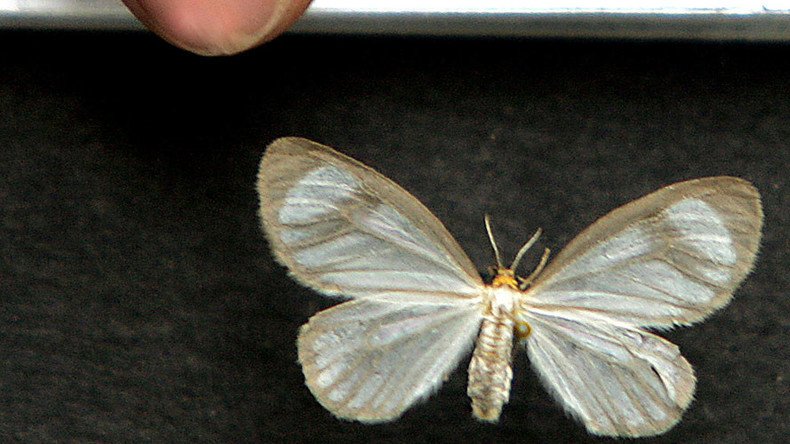Cocaine-eating moths? British govt mooted unusual plan to fight Latin American drug barons

Former Prime Minister Margaret Thatcher wanted to use cocaine-eating moths as part of a plot to destroy Latin America’s booming drug trade, newly-declassified documents reveal.
The late PM ordered the Home Office to investigate the use of moths in Peru after Lord Rothschild, a close friend and Labour peer, suggested the idea in a letter.
The plan was abandoned when it was decided that only the Peruvian government could choose whether or not to use the pest within its borders.
Rothschild suggested the use of cocaine-eating moths in 1989, prompting an enthusiastic response from Thatcher, who ordered government officials to look into the “ingenious solution.”
Thatcher held secret talks with Saudi rulers to make them buy British fighter jets https://t.co/BafabM6g6Opic.twitter.com/yBuNrBiMZK
— RT UK (@RTUKnews) August 24, 2016
The Cabinet papers, released by the National Archives at Kew, southwest London, show how Rothschild suggested using the moths without the permission of Peruvian officials.
“While virtually everyone agrees that those who take cocaine or crack, in the various ways available, should be punished, everyone, I think, agrees that it is the ‘drug baron’ who must be mercilessly ‘put down’,” the peer wrote in a letter.
“It has however occurred to me that there is a possibility that one can go ‘further back’ than the ‘drug barons’. I have in mind the introduction of a pest which attacks the source of cocaine.”
Rothschild suggested using “covert” tactics and aerial sprays to introduce the moth, in addition to more overt methods.
Police & Border Force seized over 4,000kg in cocaine in 2016 SO FAR - an 11 year high https://t.co/QXn3yr1FQkpic.twitter.com/AHnjafoboJ
— RT UK (@RTUKnews) November 3, 2016
“Supposing it is possible that such a pest exists or that it is possible to ‘make’ one, the question arises as to how to introduce it into the relevant parts of the various countries involved,” he wrote.
“One might think of aerial sprays, with or without the connivance of the government concerned.”
Thatcher thanked the Labour peer for his “characteristically brilliant” idea and wrote “very interesting” on an internal memo attached to the letter. She then asked the Home Office and chief scientific adviser John Fairclough to investigate the proposal.
Class K: Kinder eggs ‘stuffed with cocaine’ found stashed in London pub https://t.co/TzfdTCLIodpic.twitter.com/UNBGSyuFGo
— RT UK (@RTUKnews) January 15, 2016
The former PM was made aware of Eloria noyesi, a moth which eats 1.5 times its body weight in coca leaves each day when it is a caterpillar.
Biologist Ashley Morton, who had been studying the insect, told the government about reports of a swarm of the indigenous moth which had caused $37 million worth of damages when it destroyed 20,000 hectares of coca.
However, the plan was shelved when officials decided that only the Peruvian government could decide whether to use the moth against drug growers.
Lima ultimately decided against its use over fears of attracting criticism for the wider potential impact of the moths on the environment.












